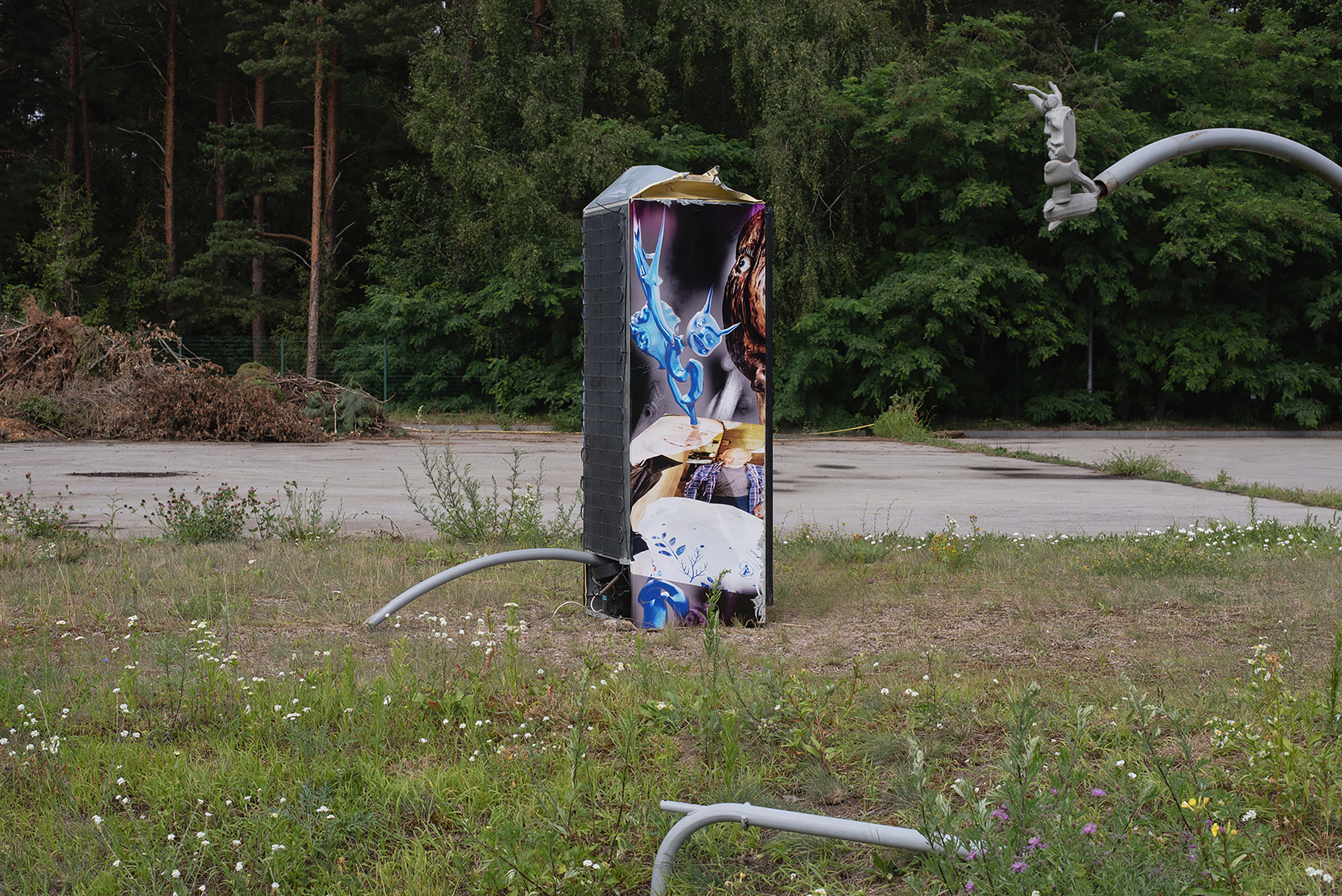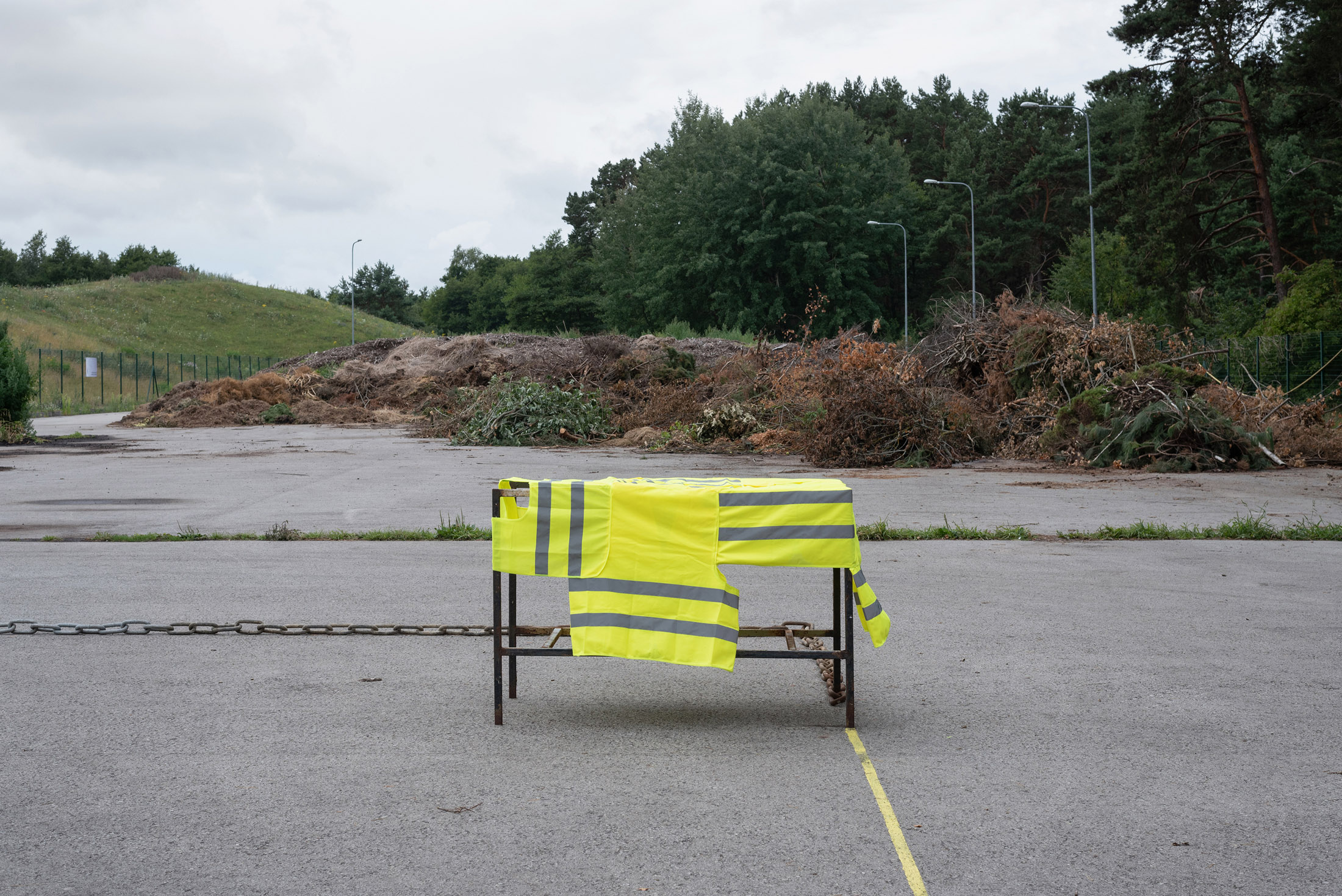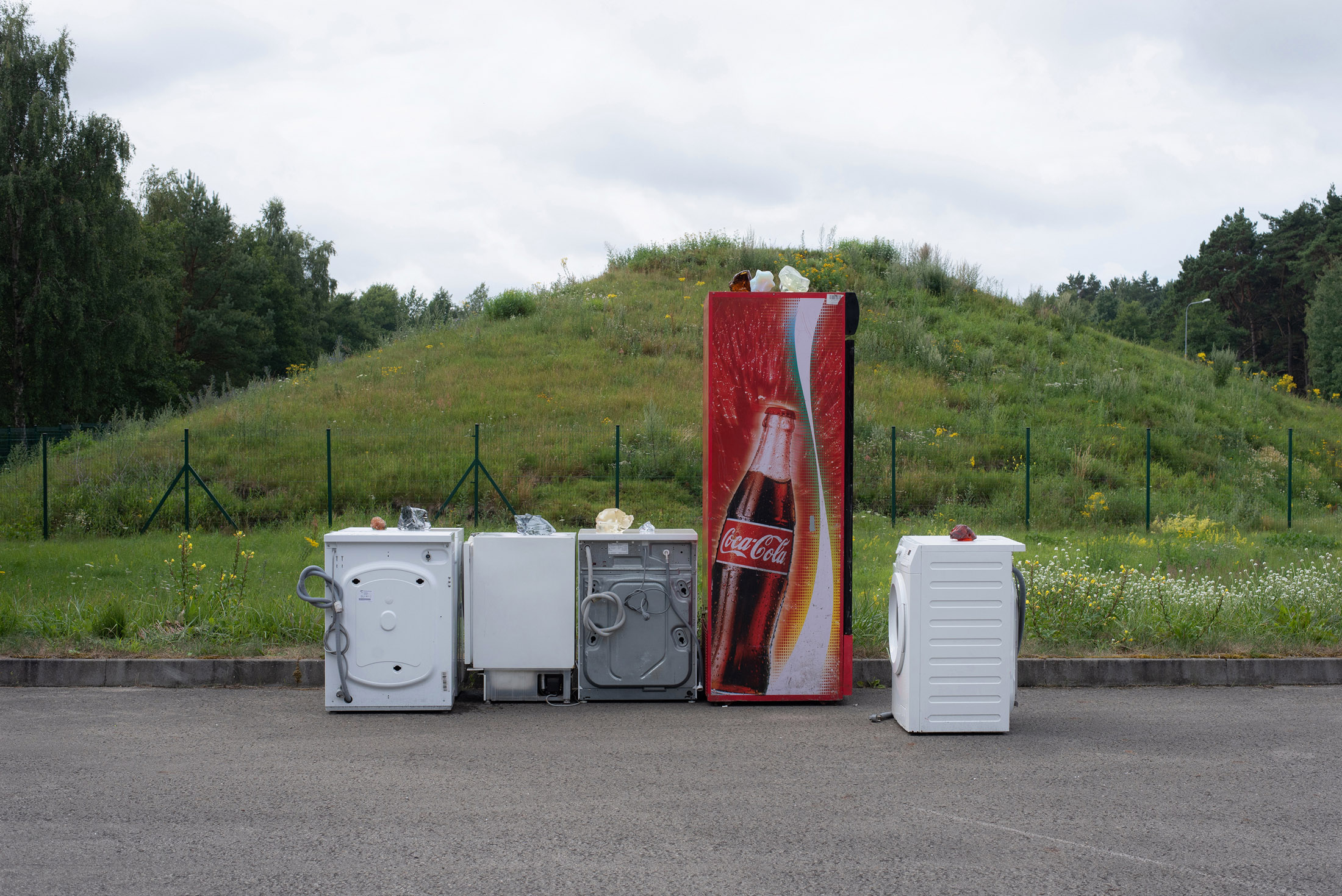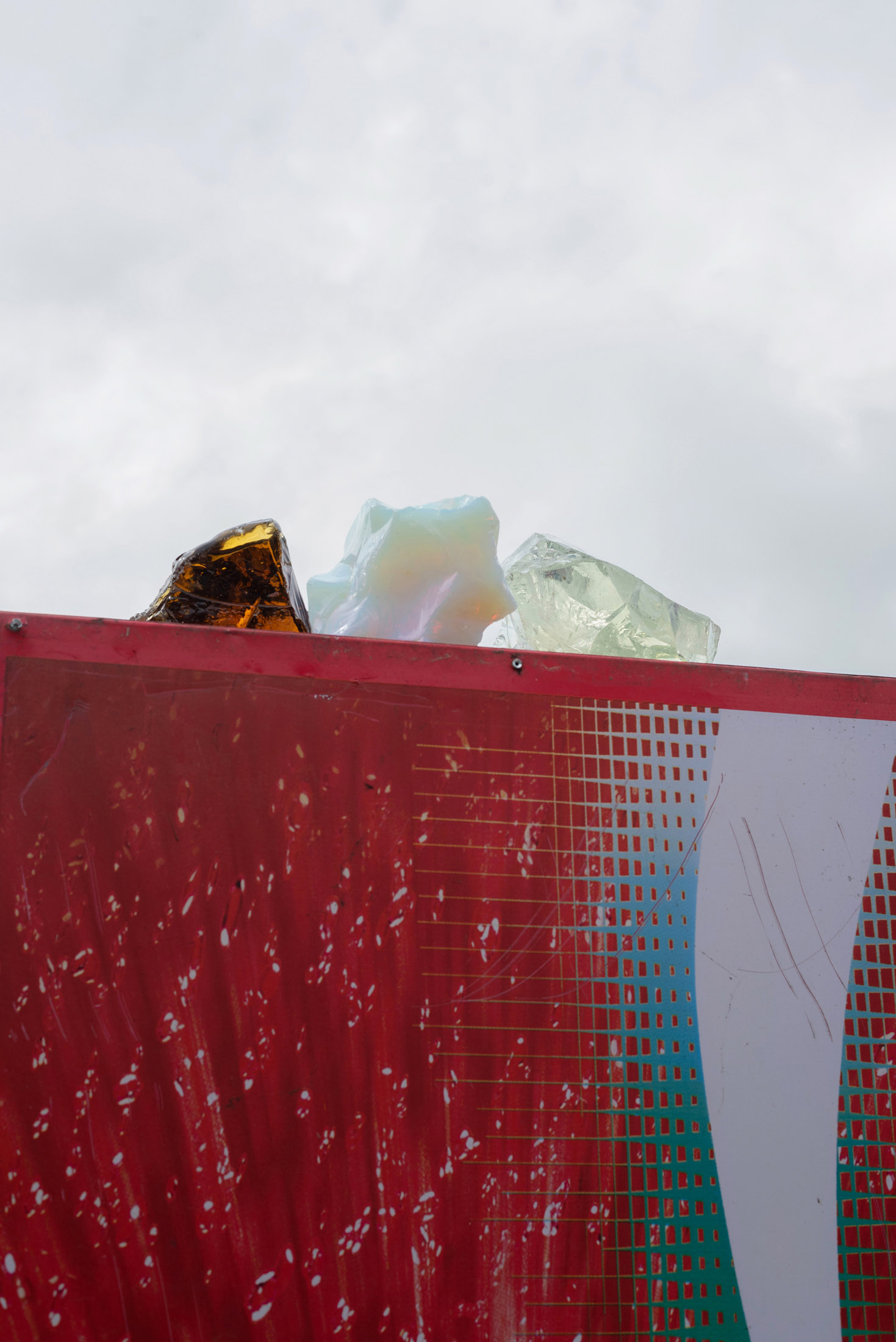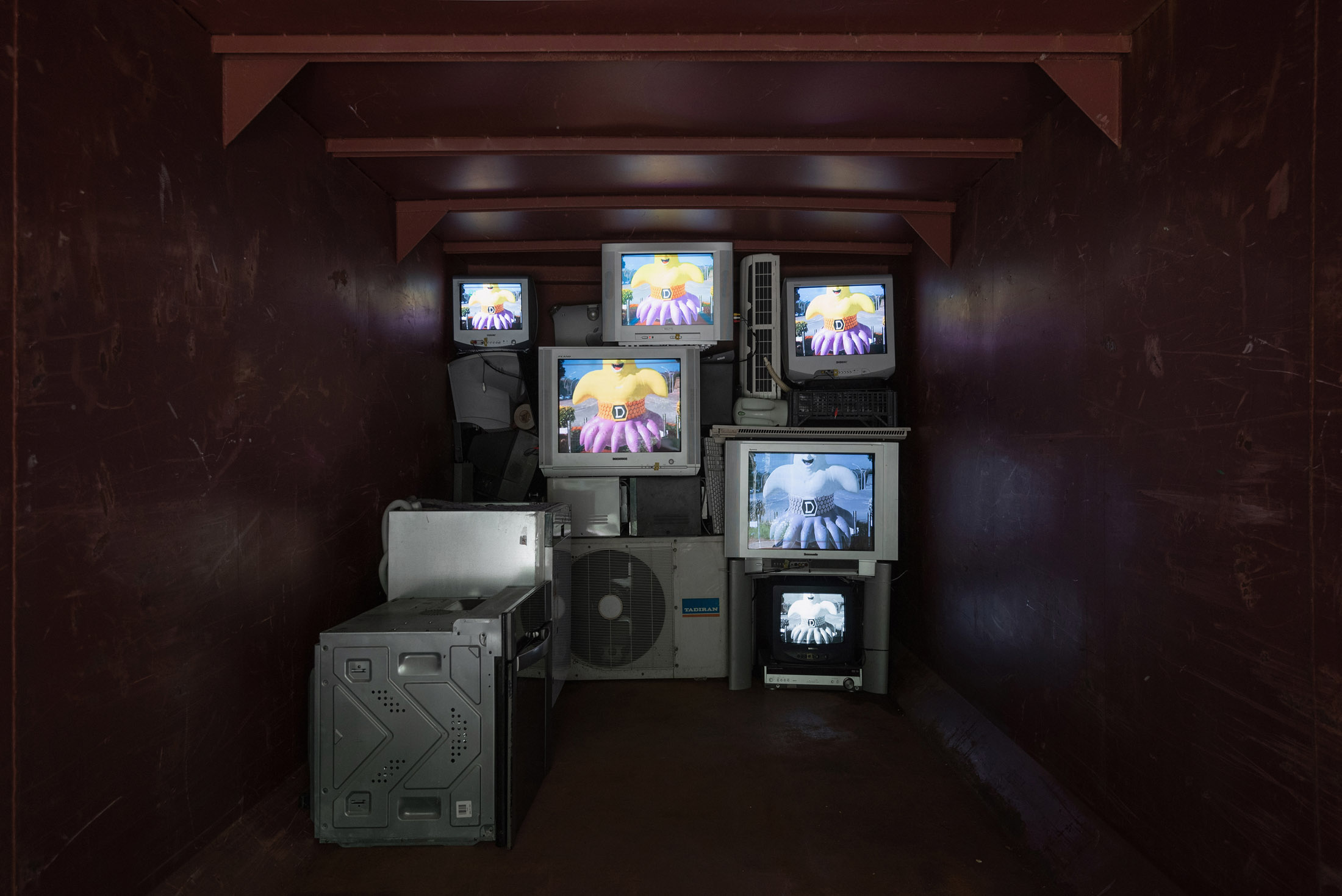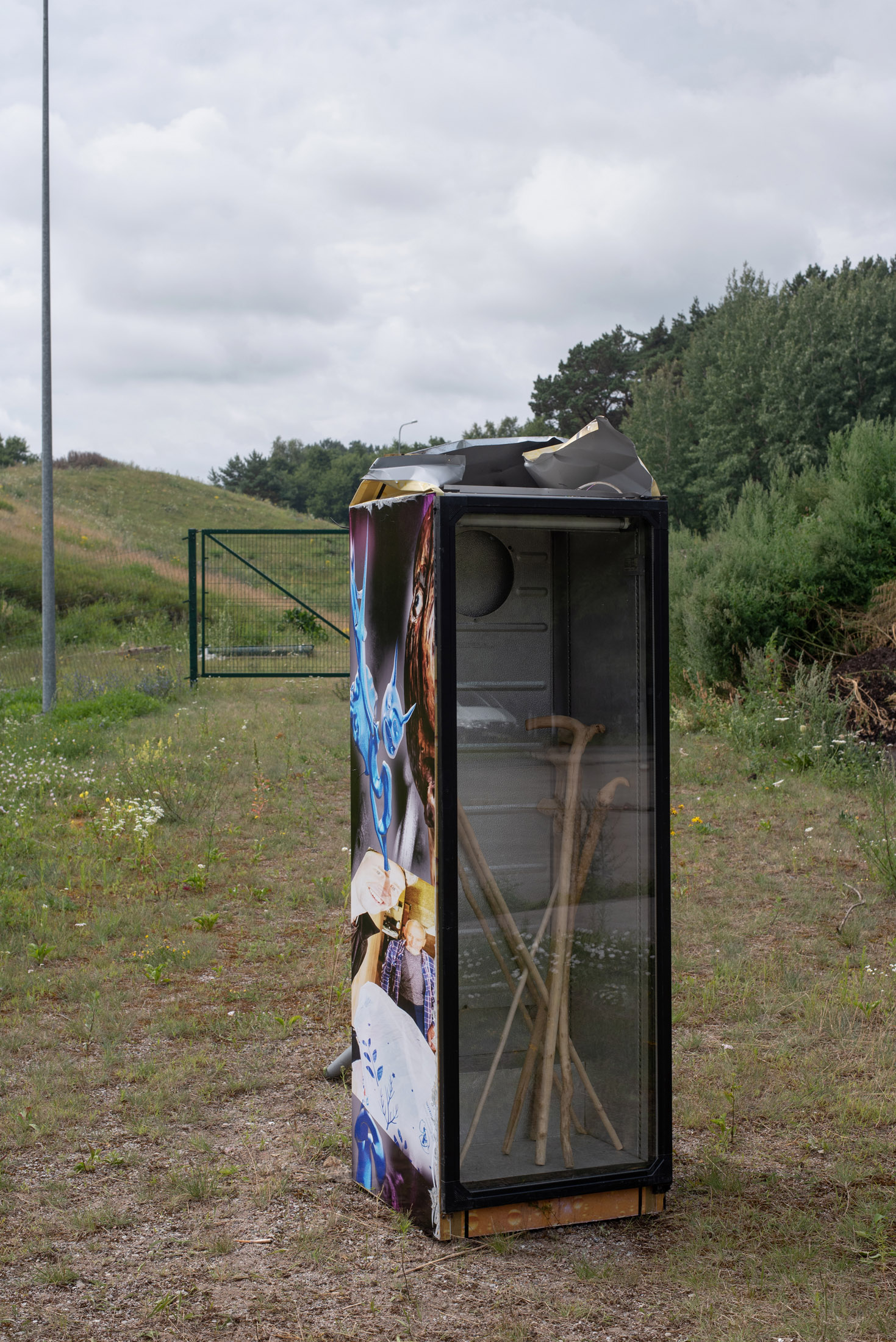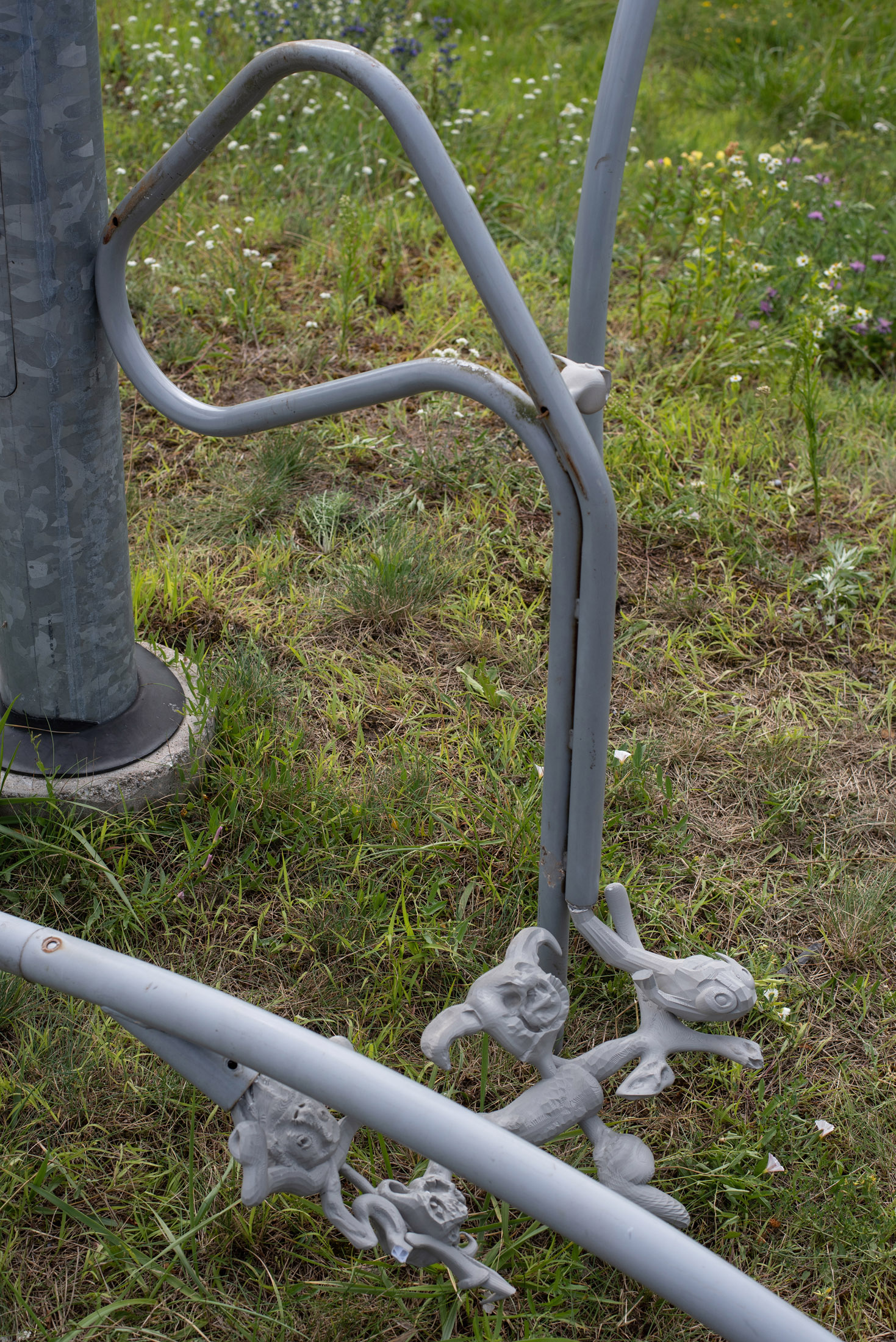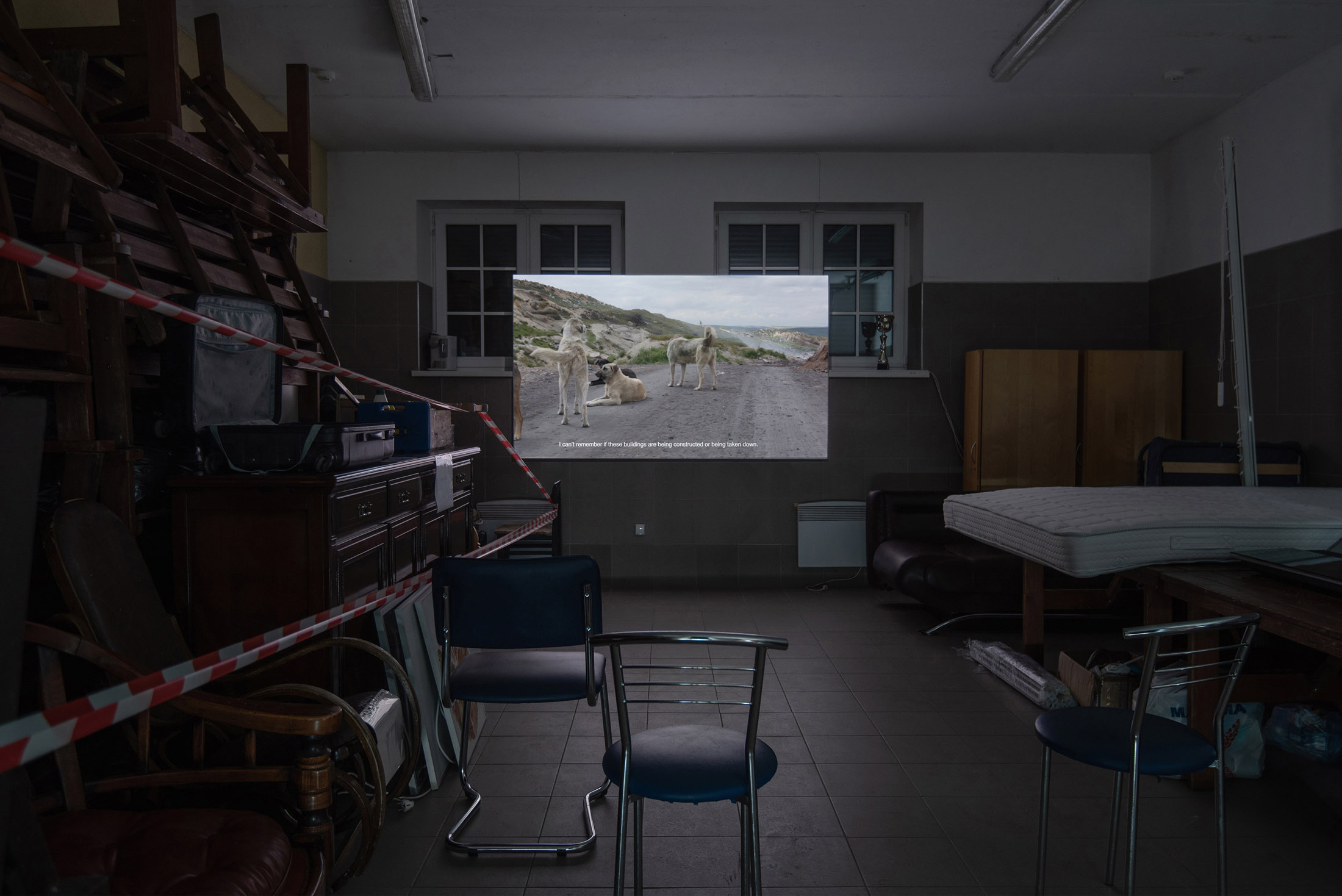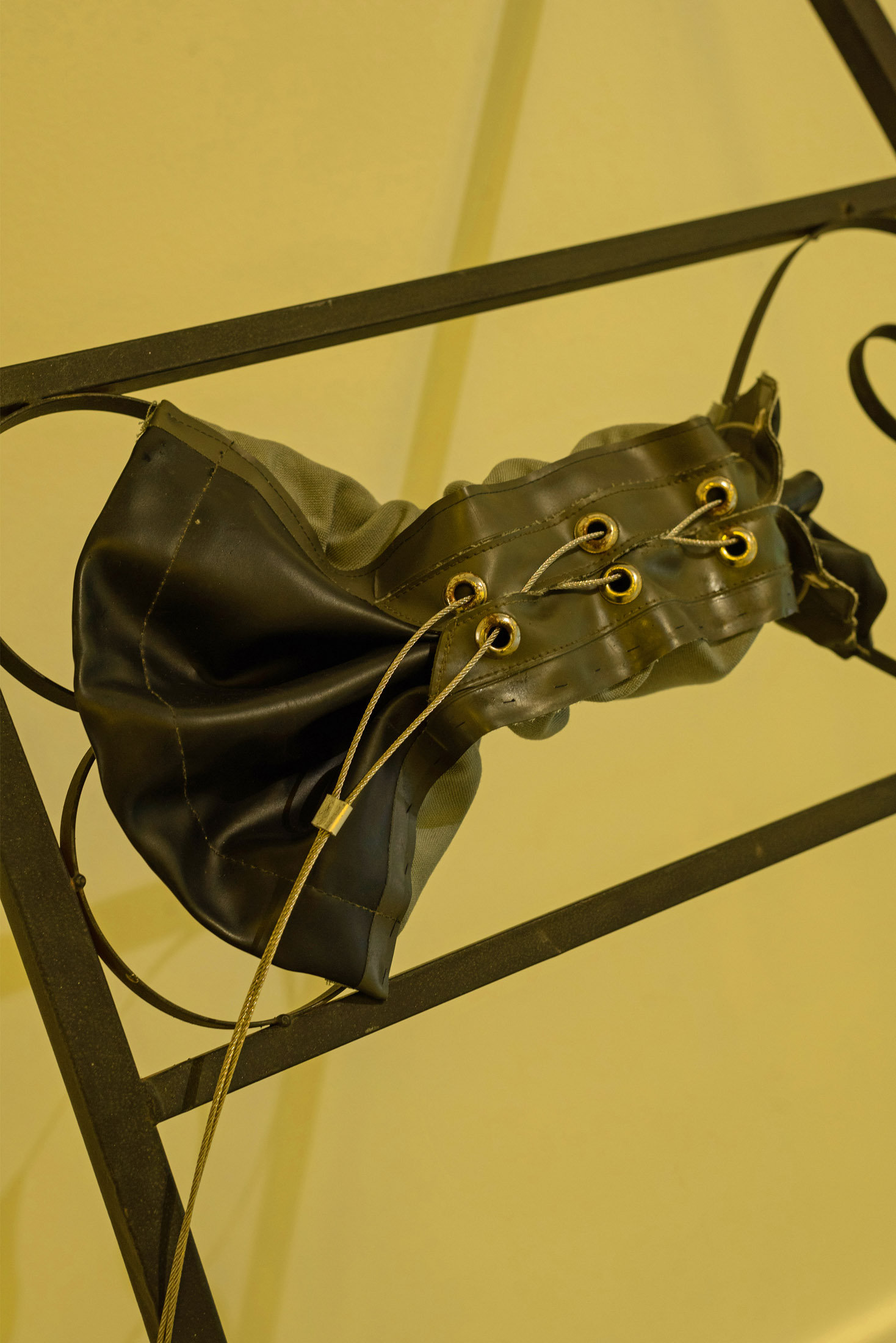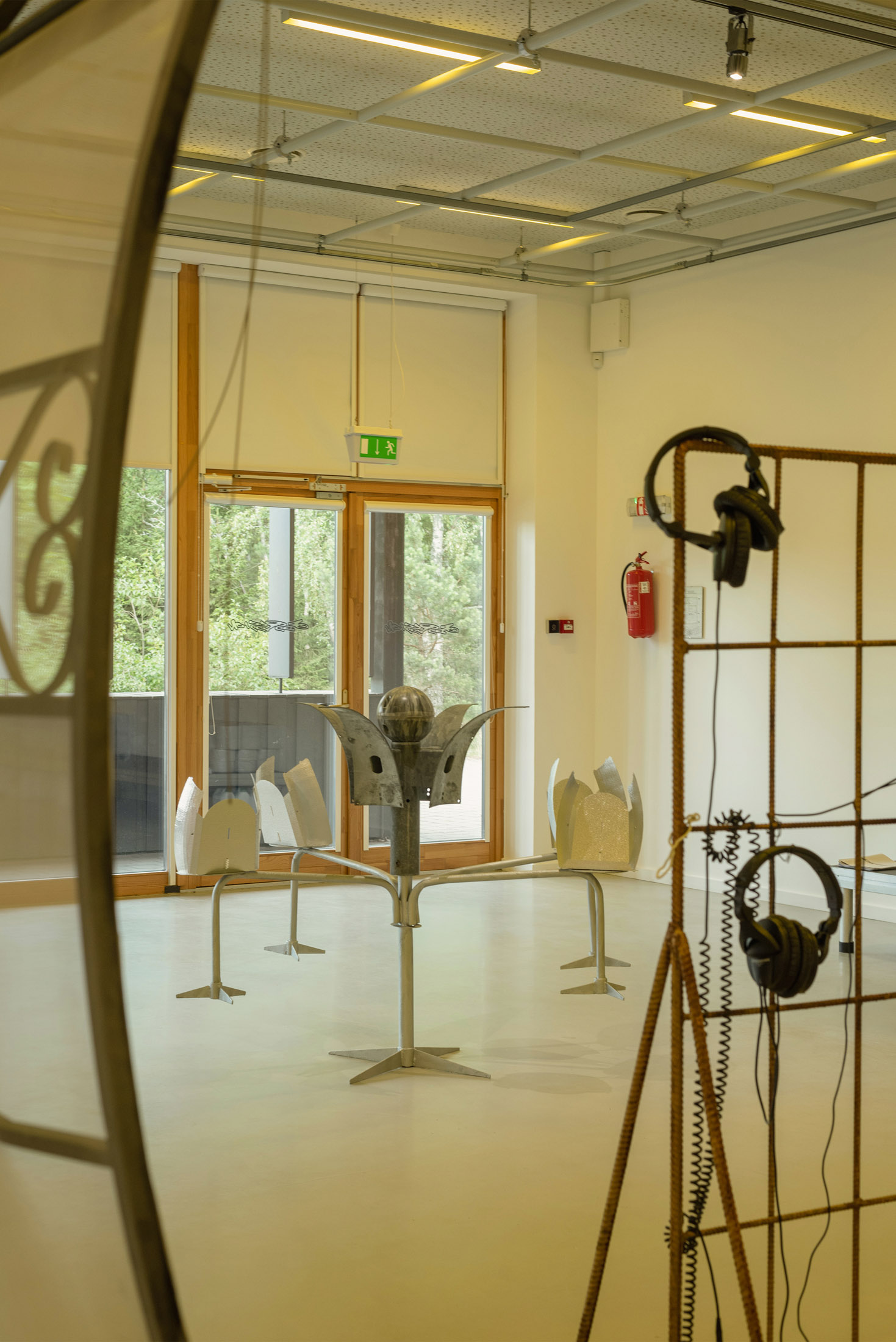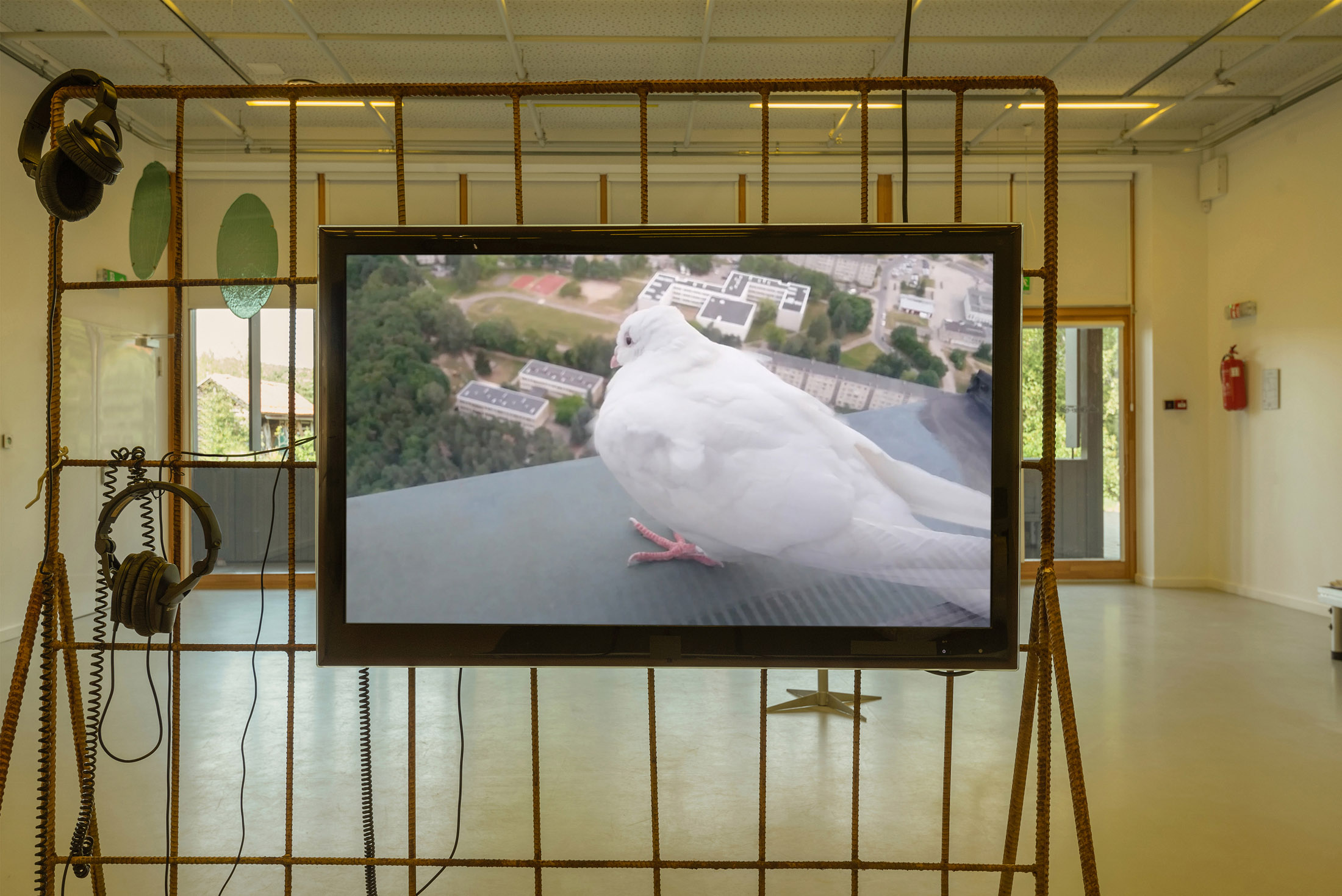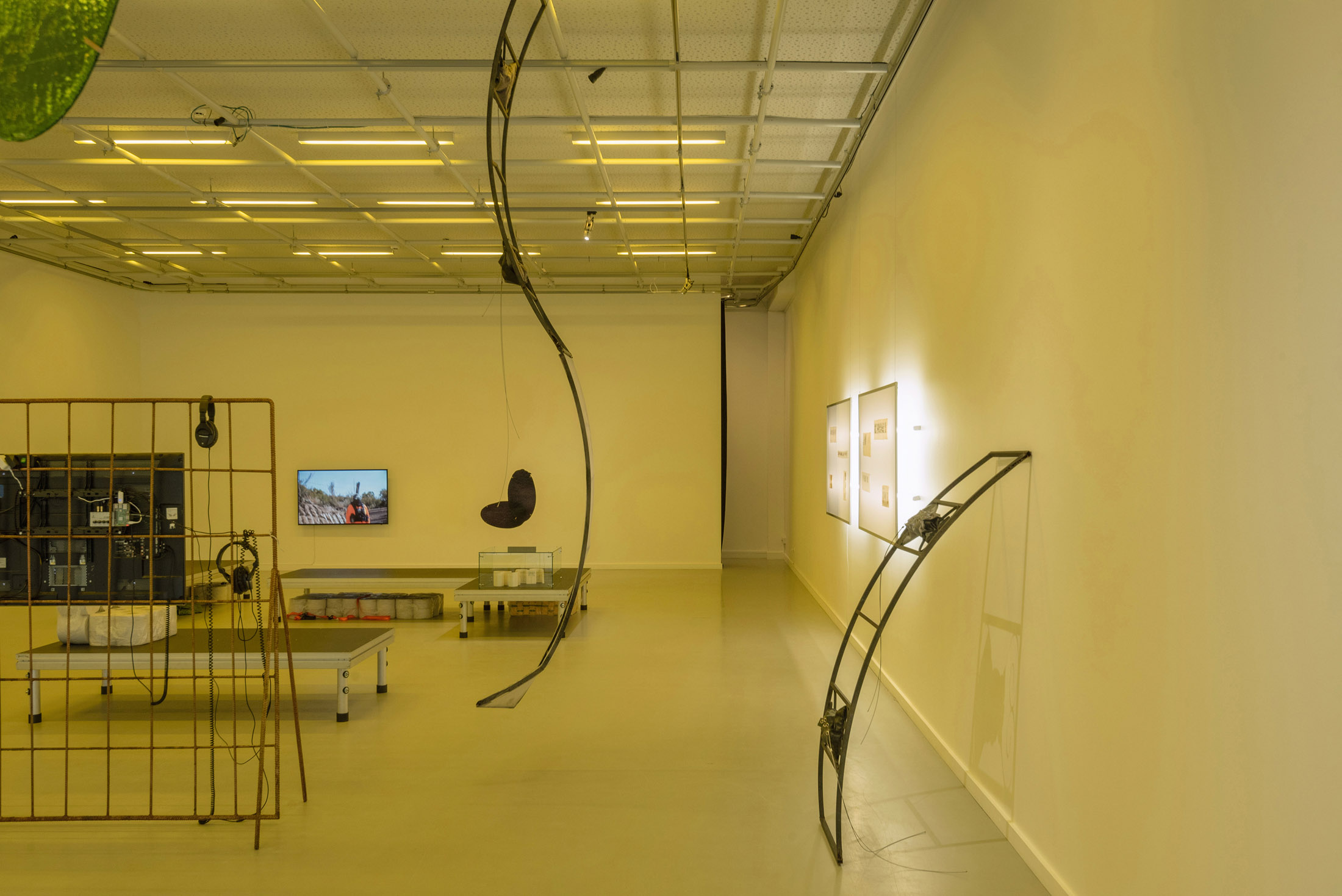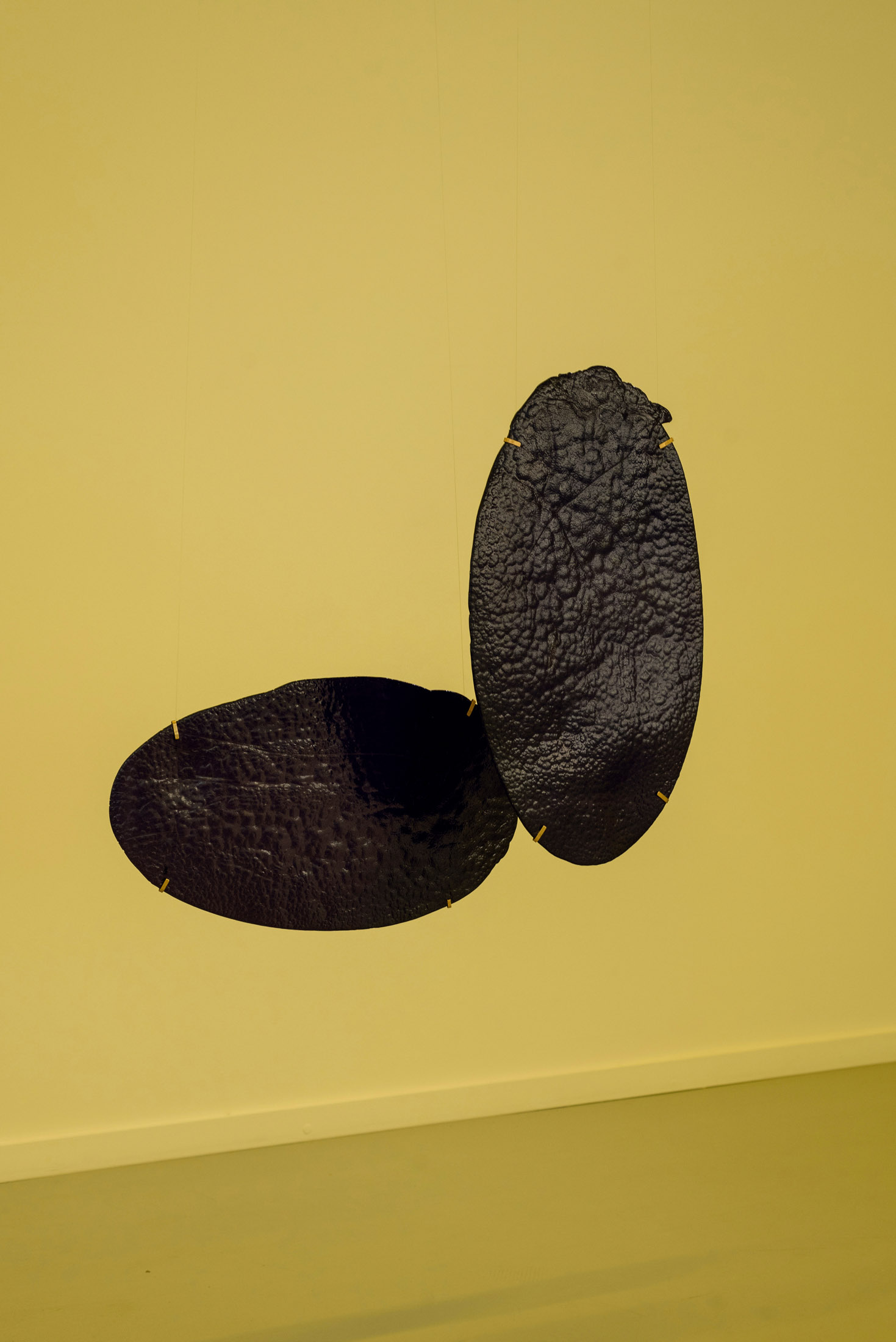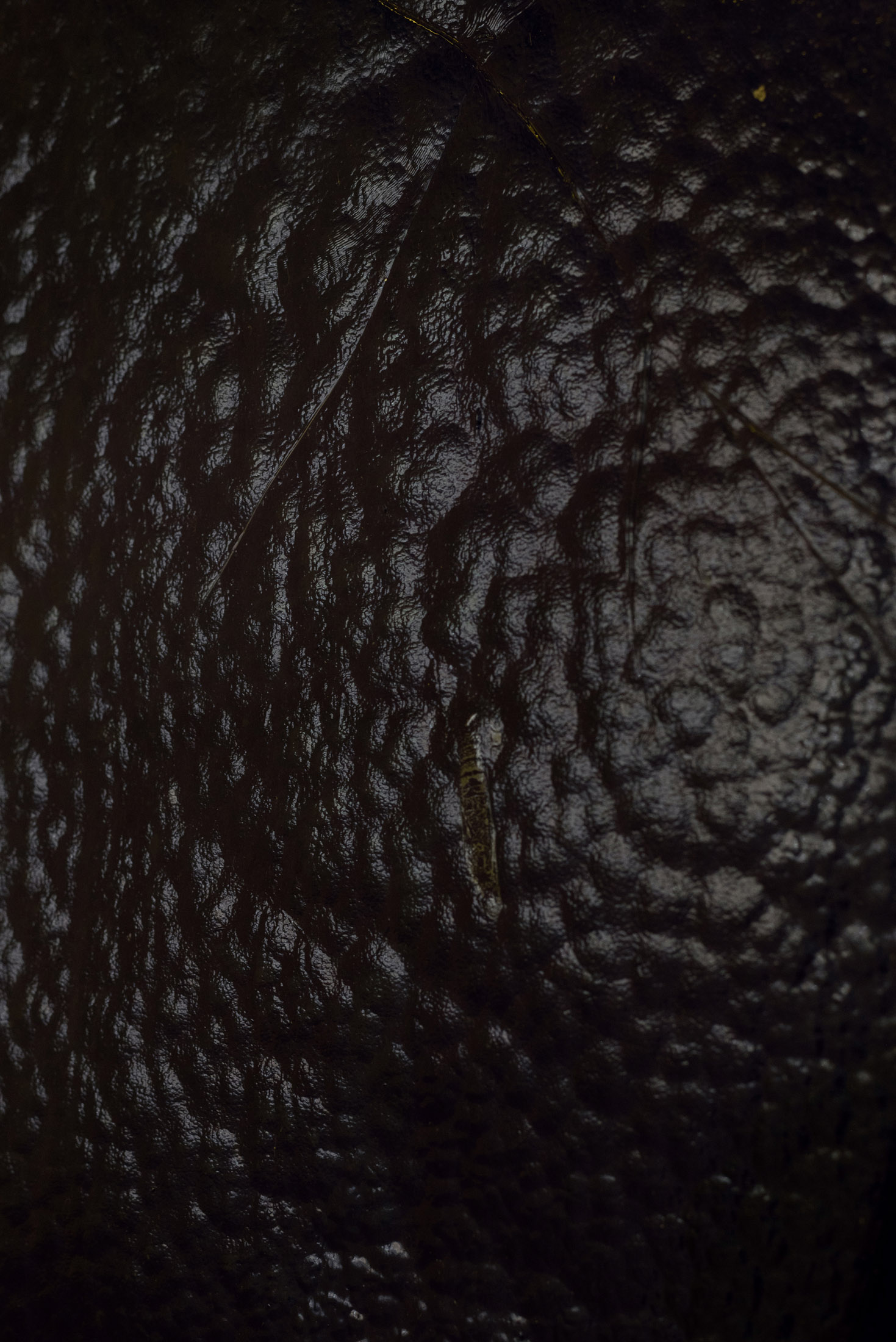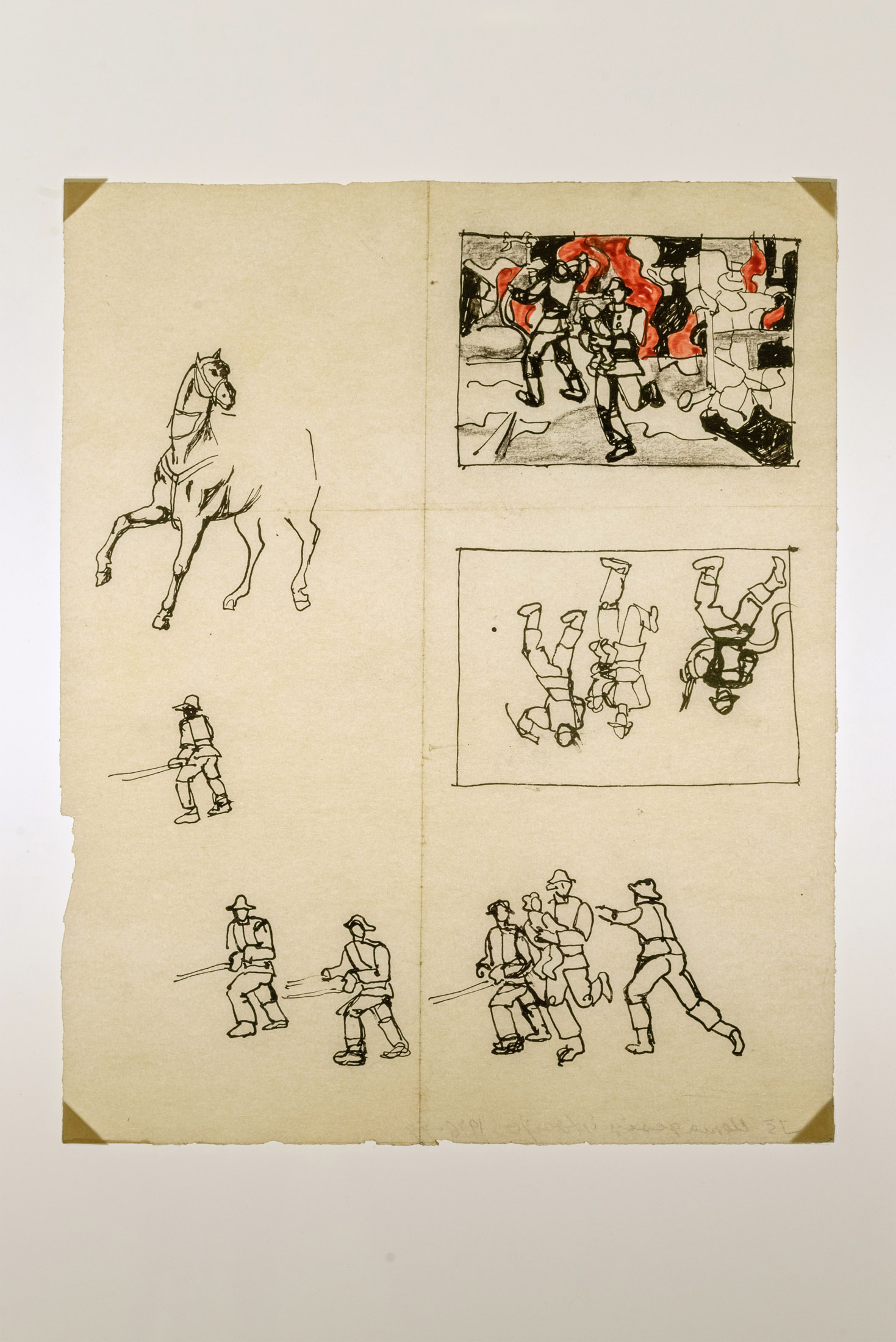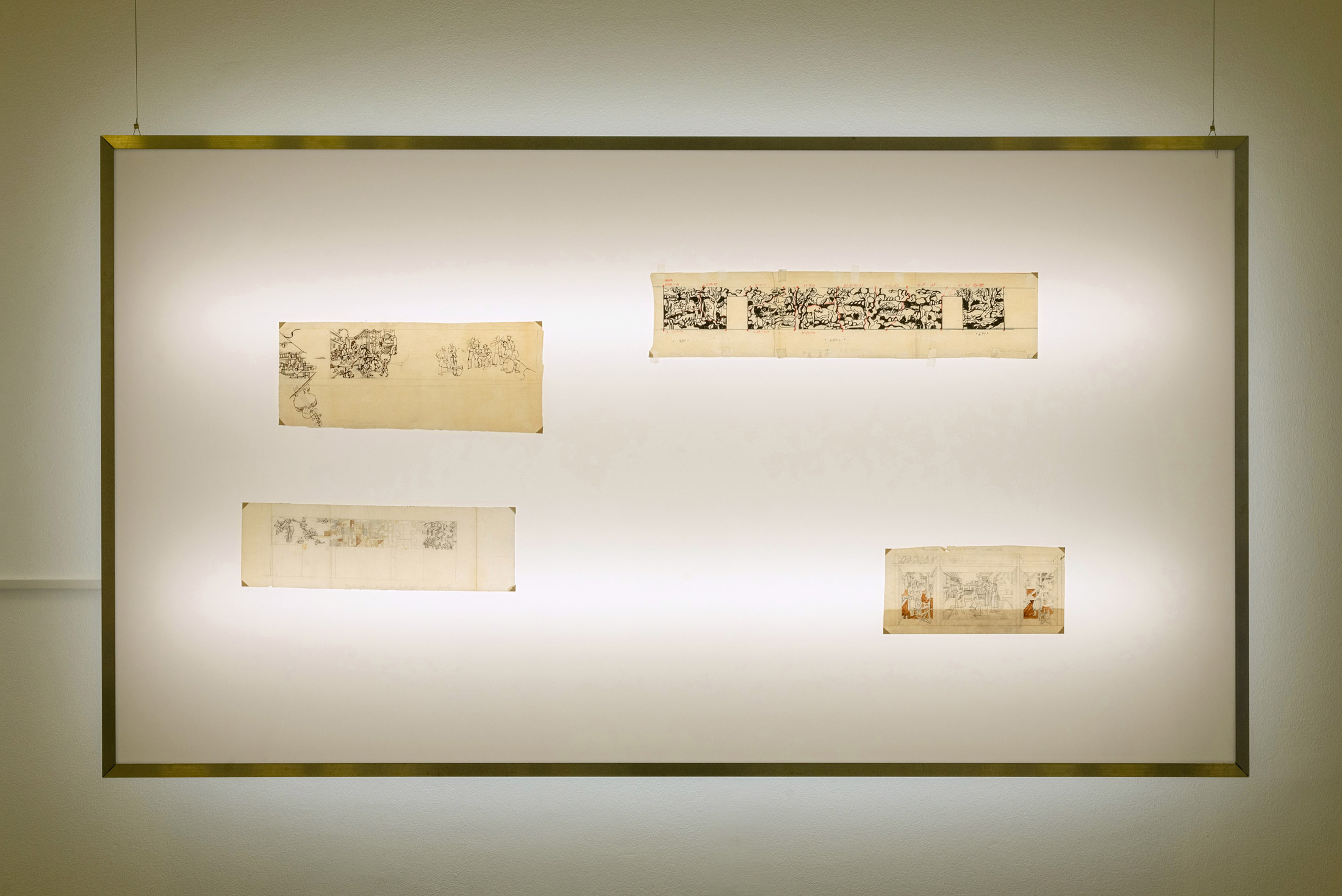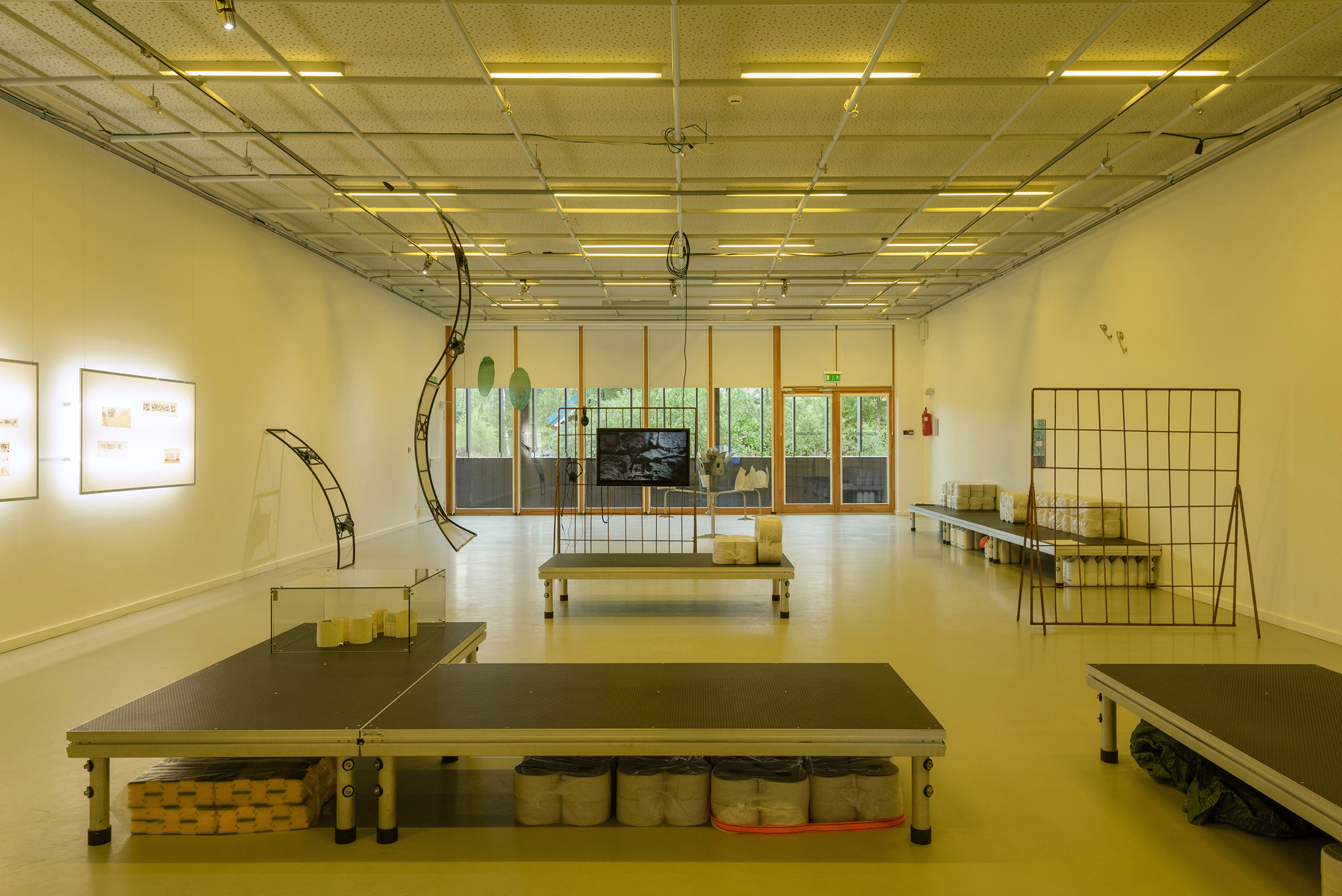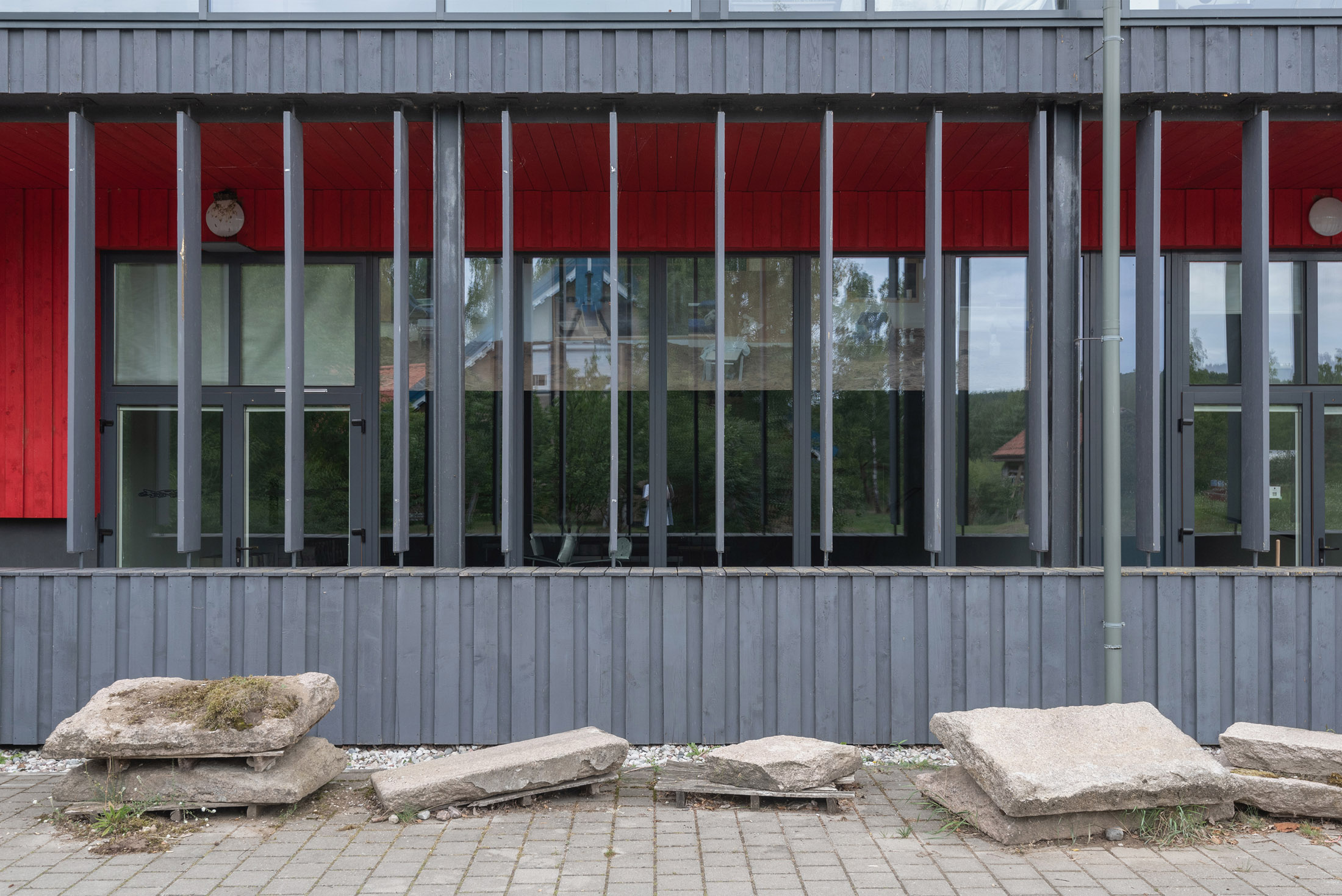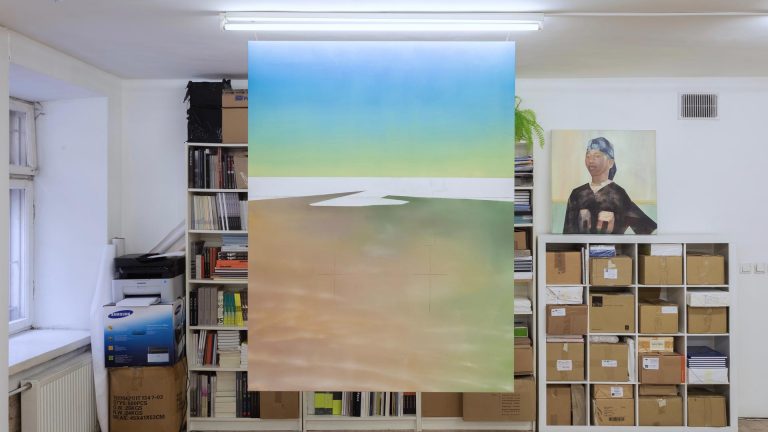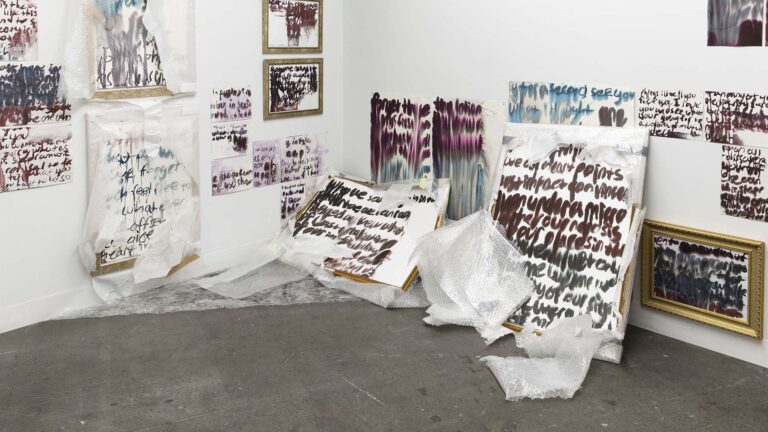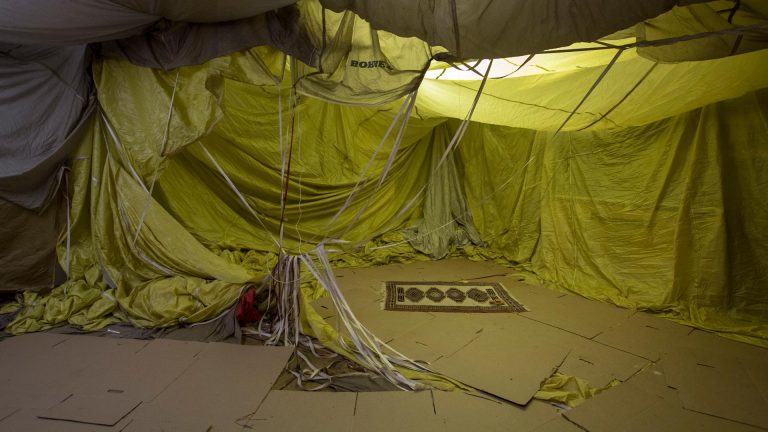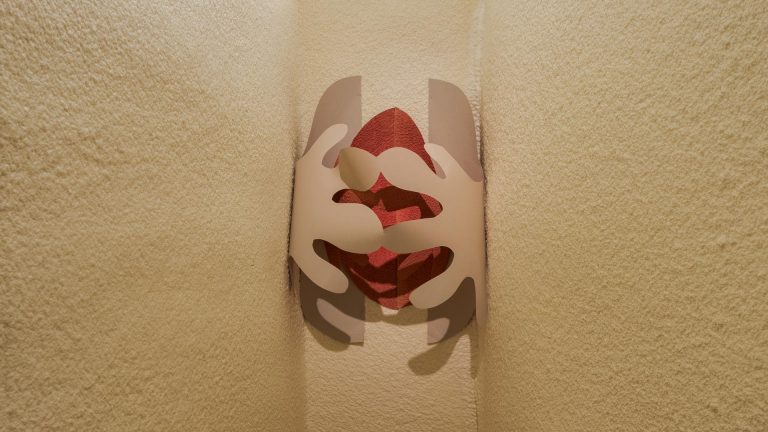Artists: Case, Annika Eriksson, Felix Kalmenson, Tomasz Kobialka, Zoe Leonard, Fox Maxy, Marija Olšauskaitė, Mykolas Valantinas in collaboration with Mečislovas Ežerskis, Nijolė Vilutytė, Miglė Vyčinaitė, Lukas Danys
Exhibition title: Obsession
Curated by: Anastasia Sosunova
Venue: Nida Art Colony, Nida, KRATC Waste Collection Site, Neringa, Lithuania
Date: July 21 – October 8, 2023
Photography: Lukas Mykolaitis / all images copyright and courtesy of the artists and Nida Art Colony
The exhibition will come in a form I cannot yet imagine.
Obsession entered my vocabulary almost as a synonym for the cathartic religious glossary of passion, temptation and ecstasy. Obsession might mean a total involvement, a necessity or a fling. Or perhaps, a seemingly ‘irrational’ force which drives artists to find answers, express their desires, ask questions, and disrupt structures of power, as poetic gestures of what philosopher Ewa Majewska terms ‘weak resistance’. When thinking of ways artists can interact with the environment in Neringa, the term ‘obsession’ came to mind.
Life on the Curonian Spit revolves around the high season: birds, insects, plants, people, and the seasonal flow of capital. ‘Migration can be triggered by the angle of sunlight, indicating a change in season, temperature, plant life, and food supply,’ writes the poet Ocean Vuong when comparing human migration to the migration of monarch butterflies – ‘it only takes a single night of frost to kill off a generation’. Which is to say, a bad summer season here may ruin a life. You see, we find ourselves in a resort town on a human-shaped landscape with a complex legacy of colonial history spanning the last two centuries, forming the landscape and its narrative with its twists, contradictions, and unexpected turns. While today, the picturesque view provides a backdrop for the neoliberal branding of the landscape, a staged authenticity formed by real estate operations, and a particular kind of resort-town urban development imagination. The roles are distributed: a guest, a ghost, a host, a superhost.
The two locations where ‘Obsession’ takes place – the exhibition hall at Nida Art Colony of Vilnius Academy of Arts and KRATC, a waste collection site 11 km from Nida – are places where these roles shift and mingle. NAC hosts numerous residents, workers, students, refugees and guests, functioning both as a place of community and a hotel, and highlighting issues of space and space-giving. The artists are guests too. They come from different places, and tell stories, to quote Elizabeth Povinelli, about ‘everywhere at the same time’ and ‘nowhere else’. It might only be a coincidence that Lukas Danys’ eerie Ketamine Clinic ‘Pakalnė’ visuals greet visitors before they enter the yellow lit show, referring to the spread of contemporary ketamine clinics, and ironically naming this one after the first rave club in 90s Kaunas.
Yet to be truly obsessed is to be haunted. The first time I thought about this was a few years ago, when Nijolė Vilutytė told me about her decision to revisit frescoes she had made that were languishing in deteriorating buildings under ignorant administrations and corrupt real estate operations. Now, these ghostly sketches anticipate the demolition of the public buildings they were created for. Relics from a closed down glass factory – glass pieces by Marija Olšauskaitė – gently invigilate the exhibition. All the while Miglė Vyčinaitė constructs mock-ups of anemometers from the fabric of urban infrastructure to shelter us from the change of weather, the real protagonist of this landscape.
However, alongside questions relating to public and private space as well as a longing for commons in today’s city, parallel questions coexist. As in, whose space was being offered? What if even in the gesture of space-giving there is always an undercurrent of dispossession of that space beneath? I remember Felix Kalmenson telling me how they became suspicious of every stone in the city after learning that buildings, urban infrastructure and even mosaics contained pieces of Jewish gravestones that were being used as a construction material throughout Lithuania.
Obsession can look like suspicion, and suspicion is a strong theory. It’s strong, because it places its faith in exposure. ‘Bcuz u havent started ur healing journeys’, Fox Maxy’s film echoes around the hall, Native American anti-colonial activism dripping from the pores of her raw video diaries. There also lies Zoe Leonard’s text piece that sends love from Niagara Falls on one of the stages stacked with hotel housekeeping materials. ‘We are having a grand time here.’ A tourist destination always strives to give us exactly what we crave.
As I leave town and enter the waste collection site, I often feel like I’m entering the Curonian Spit’s backstage area. Human-made hills of recycled waste bloom in the background of a vast parking lot, where objects of incomparable purposes are sorted into stacks according to materials and stand in ultra-contemporary (yet somewhat Borgesian) still lives: broken vases, innumerable and fabled stuff, et cetera. It’s where all that was over-and-done-with comes alive.
Having been obsessed with waste collection and scrap metal sites as ultimate exhibitions in their own right, it made sense to me to imagine artists messing with the rigid categories of things and events, like Marija Olšauskaitė, who turns byproducts of glass-making into treasures, or the anamorphic canes of woodcarver Mečislovas Ežerskis that have been playfully interpreted by Mykolas Valantinas. Everything keeps changing, and the site never stays the same. The other day I saw a shipping container being dragged out of the site so quickly and smoothly that it almost seemed rude of the truck not to linger a little bit longer. In one of these containers, an animated Dollarmite alien mascot dances in a video installation by Tomasz Kobialka, with a gif-like ease depicting the ‘randomness’ of the viral videos – with corporate branding and influencer culture flashing in the foreground, as governments fall in the background.
‘They lived here, then they disappeared and others came and disappeared and now they are back. But tomorrow they leave. As if I would care,’ goes the monologue of a stray dog in Annika Eriksson’s video, resounding inside of the second-hand exchange garage. ‘Well whatever. Same difference’ the voice still echoes in the background, while outside, Case draws borders around the site, playing spatial games that restrict and give access. ‘All borders start from a drawing,’ they say. Plain and simple, like daily non heroic acts of disobedience.
A trial and error. A reality show. A myth that creates itself.
-Anastasia Sosunova
Exhibition view: Obsession, 2023, KRATC waste collection site, Neringa. Photo by Lukas Mykolaitis
Mykolas Valantinas in collaboration with Mečislovas Ežerskis, Gut Creatures, 2023, wooden walking canes, digital prints, found objects, 3D print. Photo by Lukas Mykolaitis
Case, Sideworks: Nida, Lithuania, 2023 – ongoing, detail, installation. Photo by Lukas Mykolaitis
Case, Sideworks: Nida, Lithuania, 2023 – ongoing, detail, installation. Photo by Lukas Mykolaitis
Marija Olšauskaitė, Oversee, 2018 – ongoing, glass, metal, mixed media. Photo by Lukas Mykolaitis
Marija Olšauskaitė, Oversee, 2018 – ongoing, glass, metal, mixed media. Photo by Lukas Mykolaitis
Marija Olšauskaitė, Oversee, 2018 – ongoing, glass, metal, mixed media. Photo by Lukas Mykolaitis
Tomasz Kobialka, coup d’état, 2023, multi-channel video installation, 01:56. Photo by Lukas Mykolaitis
Tomasz Kobialka, coup d’état, 2023, detail, multi-channel video installation, 01:56. Photo by Lukas Mykolaitis
Mykolas Valantinas in collaboration with Mečislovas Ežerskis, Gut Creatures, 2023, wooden walking canes, digital prints, found objects, 3D print. Photo by Lukas Mykolaitis
Mykolas Valantinas in collaboration with Mečislovas Ežerskis, Gut Creatures, 2023, detail, wooden walking canes, digital prints, found objects, 3D print. Photo by Lukas Mykolaitis
Case, Sideworks: Nida, Lithuania, 2023 – ongoing, installation. Photo by Lukas Mykolaitis
Annika Eriksson, I am the dog that was always here (loop), 2013, video, 09:07. Photo by Lukas Mykolaitis
Exhibition view: Obsession, 2023, Nida Art Colony, Nida. Photo by Lukas Mykolaitis
Miglė Vyčinaitė, Ylingė, 2023, found objects, net, reflective tape, paint, metal wire. Photo by Lukas Mykolaitis
Miglė Vyčinaitė, Ylingė, 2023, detail, found objects, net, reflective tape, paint, metal wire. Photo by Lukas Mykolaitis
Miglė Vyčinaitė, like a sentinel watching over the city, 2023, found objects, spray paint. Photo by Lukas Mykolaitis
Felix Kalmenson, The Second Opinion, 2016–2019, video, 24:50. Photo by Lukas Mykolaitis
Felix Kalmenson, 7.5% (Dybbuk), 2023, stage platforms, NAC housekeeping materials, framed digital prints on paper. Photo by Lukas Mykolaitis
Exhibition view: Obsession, 2023, Nida Art Colony, Nida. Photo by Lukas Mykolaitis
Fox Maxy, Maat, 2020, video, 30:00. Photo by Lukas Mykolaitis
Marija Olšauskaitė, Oversee, 2018 – ongoing, glass, metal, mixed media. Photo by Lukas Mykolaitis
Marija Olšauskaitė, Oversee, 2018 – ongoing, detail, glass, metal, mixed media. Photo by Lukas Mykolaitis
Exhibition view: Obsession, 2023, Nida Art Colony, Nida. Photo by Lukas Mykolaitis
Nijolė Vilutytė, Sketches for artworks in public architectural spaces, 1972–1990, detail, drawings on tracing paper. Photo by Lukas Mykolaitis
. Nijolė Vilutytė, Sketches for artworks in public architectural spaces, 1972–1990, drawings on tracing paper. Photo by Lukas Mykolaitis
Nijolė Vilutytė, Sketches for artworks in public architectural spaces, 1972–1990, drawings on tracing paper. Photo by Lukas Mykolaitis
. Exhibition view: Obsession, 2023, Nida Art Colony, Nida. Photo by Lukas Mykolaitis
. Lukas Danys, Ketamine Clinic ‘Pakalnė’, 2023, digital print, paper. Photo by Lukas Mykolaitis



